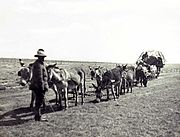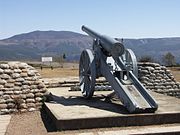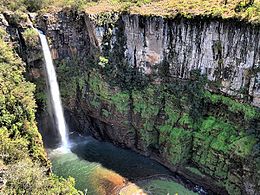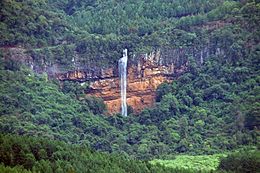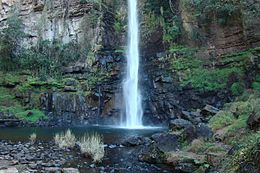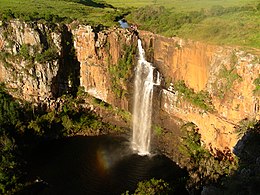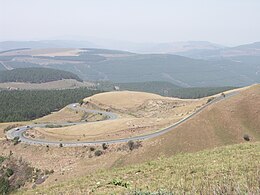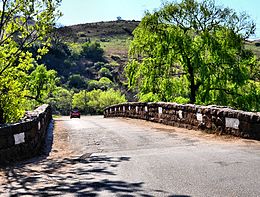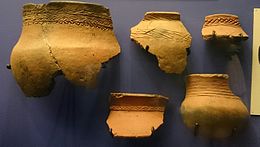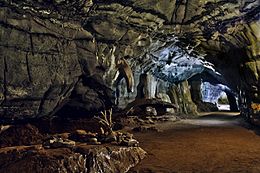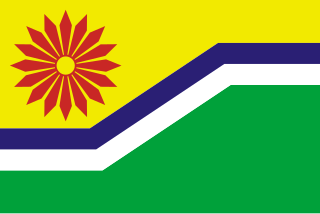
Mpumalanga is one of the nine provinces of South Africa. The name means "East", or literally "The Place Where the Sun Rises" in the Nguni languages. Mpumalanga lies in eastern South Africa, bordering Eswatini and Mozambique. It shares borders with the South African provinces of Limpopo to the north, Gauteng to the west, the Free State to the southwest, and KwaZulu-Natal to the south. The capital is Mbombela.

Lydenburg, also known as Mashishing, is a town in Thaba Chweu Local Municipality, on the Mpumalanga highveld, South Africa. It is situated on the Sterkspruit/Dorps River tributary of the Lepelle River at the summit of the Long Tom Pass. It has a long, rich history, ranging from AD 500 to the present. The name is derived from the Dutch Lijdenburg, or "Town of Suffering", and is named for the experiences of the white settlers. In Northern Sotho, Mashishing means "long green grass." Lydenburg has become the centre of the South African fly-fishing industry and is an agricultural, tourism and mining hub.

Graskop is a small town in Mpumalanga province, South Africa. It was set up in the 1880s as a gold mining camp but it now serves as a tourist destination and the timber industry. “God’s Window”, a scenic view from the escarpment of the Lowveld below, is located outside the town. Graskop is 14 km south-east of Pilgrim's Rest and 28 km north of Sabie. It was laid out between 1880 and 1890 on a farm belonging to Abel Erasmus, Native Commissioner of the Transvaal Republic. The name is Afrikaans for grassy hillock. Originally it was a mining camp. It is the best place to view the "Edge of the Lowveld", with a sudden drop of 700 metres.

Sabie is a forestry town situated on the banks of the Sabie River in Mpumalanga, South Africa. The name Sabie is derived from the siSwati word "Ulusaba" which means "fearful river" because the river was once teeming with dangerous Nile crocodile. The word Ulusaba was modernized by the Afrikaner settlers who changed it from Ulusaba (siSwati) into the Afrikaans "Sabie".

Middelburg is a large farming and industrial town in the South African province of Mpumalanga.

Hazyview is a sub-tropical farming town in Mpumalanga, South Africa, renowned for its large banana and macadamia nut industries, contributing about 20% of South Africa's bananas and 30% of macadamia output. Bordering the Kruger National Park, the town's name is derived from the shimmering haze that occurs during the heat of summer. Most of the province of Mpumalanga's private game reserves are found just east of Hazyview.

The R37 is a provincial route in South Africa that connects Polokwane with Mbombela via Burgersfort and Lydenburg (Mashishing).

The Blyde River Canyon is a 26 km long Canyon located in Mpumalanga, South Africa. It is one of the larger canyons on Earth but much smaller than those of Asia, the Grand Canyon and the Fish River Canyon. Unlike the Grand and Fish River Canyon, the Blyde River Canyon is a "green canyon" which is dominated by subtropical vegetation. The canyon forms part of the Blyde River Canyon Nature Reserve.
The Treur River barb or simply Treur barb is a species of cyprinid fish. It is endemic to northern Mpumalanga, South Africa.
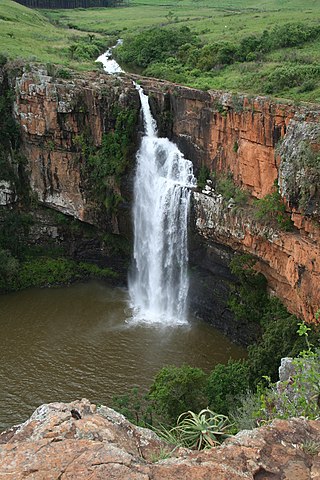
The Berlin Falls is a waterfall in Mpumalanga, South Africa. They are located close to God's Window and the highest waterfall in South Africa's Mpumalanga province, Lisbon Falls. They are less than a tenth of the height of South Africa's tallest waterfall, the Tugela Falls, and are better known for their beauty.
Blyde River Canyon Nature Reserve is situated in the Drakensberg escarpment region of eastern Mpumalanga, South Africa. The reserve protects the Blyde River Canyon, including sections of the Ohrigstad and Blyde Rivers and the geological formations around Bourke's Luck Potholes, where the Treur River tumbles into the Blyde below. Southwards of the canyon, the reserve follows the escarpment, to include the Devil's and God's Window, the latter a popular viewpoint to the lowveld at the reserve's southern extremity.
Kowyn Pass is situated in Mpumalanga province, on the R533 road between Graskop and Bosbokrand, South Africa. The pass was completed on 3 October 1959. It descends from an altitude of 1,448 metres above sea level near Graskop, to 500 metres at Bosbokrand, which implies an average slope of 1:14.

The Motlatse River, Blyde River, or Umdhlazi River is a river in the Mpumalanga and Limpopo provinces of South Africa. It has a northwards course in steep-sided valleys and ravines of the Mpumalanga Drakensberg, before it enters the lowveld region of the Limpopo province. It has its ultimate origins at around 2,000 m altitude in the Hartebeesvlakte conservation area, to the north of Long Tom Pass. It runs through the Blyde River Canyon.
The Kruger to Canyons Biosphere Region is a biosphere reserve situated in the north eastern region of South Africa, straddling Limpopo and Mpumalanga Provinces. In 2001, under the supervision of the then Department of Environmental Affairs (DEA), the Kruger to Canyons Biosphere Region was officially ratified by UNESCO as part of the Man and the Biosphere (MaB) Programme. UNESCO's Man and the Biosphere Programme provides a framework for exploring local solutions to challenges by mainstreaming biodiversity conservation and sustainable development, integrating economic, social and environmental aspects and recognising their vital linkages within specific learning landscapes adjacent to Protected Areas.

Bushbuckridge Municipality is a local municipality within the Ehlanzeni District Municipality, in the Mpumalanga province of South Africa. Commercial farming, which consists of pine and bluegum plantations, tobacco, cotton, sub-tropical fruits and vegetables, is practised in the municipality's countryside. The municipality includes the southern part of Kruger National Park. Bushbuckridge is the largest local municipality in Mpumalanga in terms of land size.

The Treur River is a small river in the Drakensberg escarpment region of eastern Mpumalanga province, South Africa. The R532 motor route intersects it twice. Its ultimate origin is inside the Blyde River Canyon Nature Reserve, though most of its course is to the west of this protected area. It is a tributary of the Blyde River, and has no major tributaries of its own. There are two sharp drops in its course, at Poe Falls 24°45′S30°52′E and Bourke's Luck Potholes respectively.
The R532 is a Regional Route in South Africa that connects the Blyde River Canyon with Sabie via Graskop.
The R536 is a Regional Route in South Africa.

The Lisbon Falls are falls in the Lisbon Creek, a right bank tributary of the Blyde River. They are situated a short distance north of Graskop beside the R532 road, and are the highest waterfalls in Mpumalanga, South Africa. The waterfalls are 94 metres (308 ft) high and were named for the Lisbon Creek and the Farm Lisbon, on which the falls are located.
The Pulana, or Mapulana, are a low-veld ethnic group found in Bushbuckridge near Mpumalanga and Limpopo provinces. Their language is called Sepulana and is considered a dialect of the Northern Sotho language group. although it is a northern sotho dialect it also hugely influenced by Xitsonga, Swati, Afrikaans, English, and Setswana

